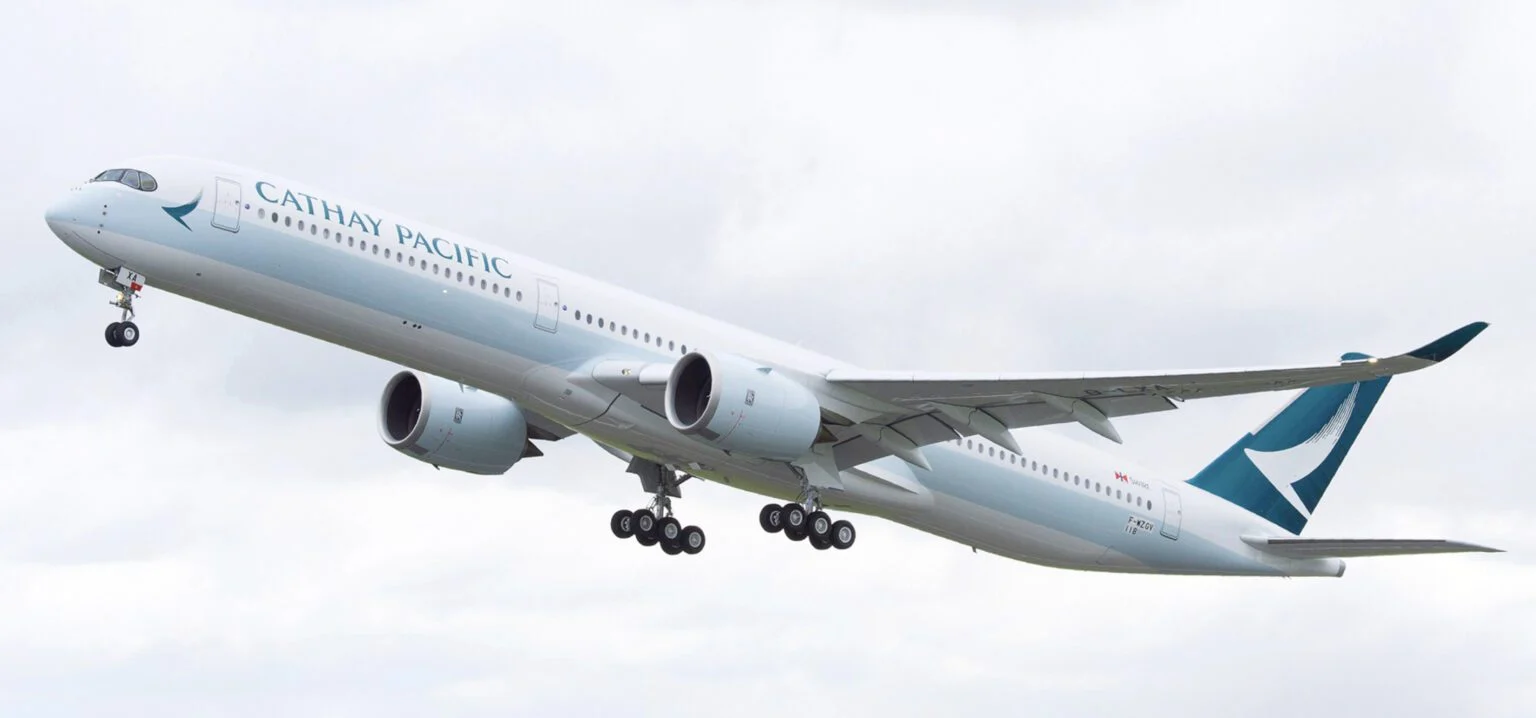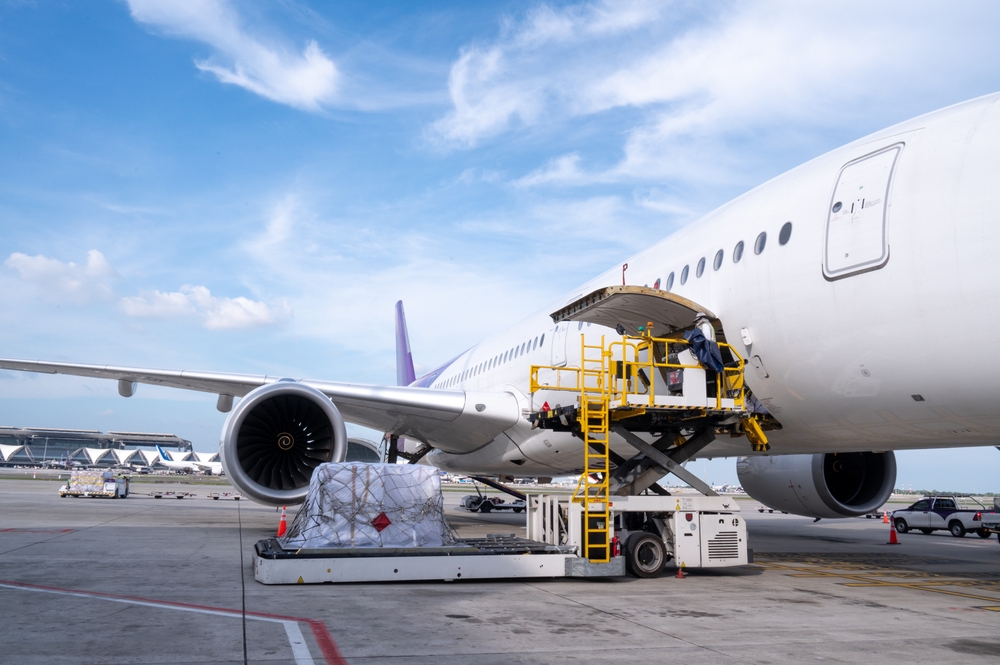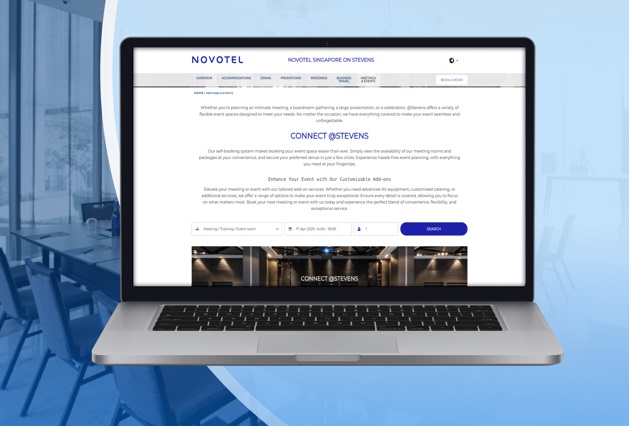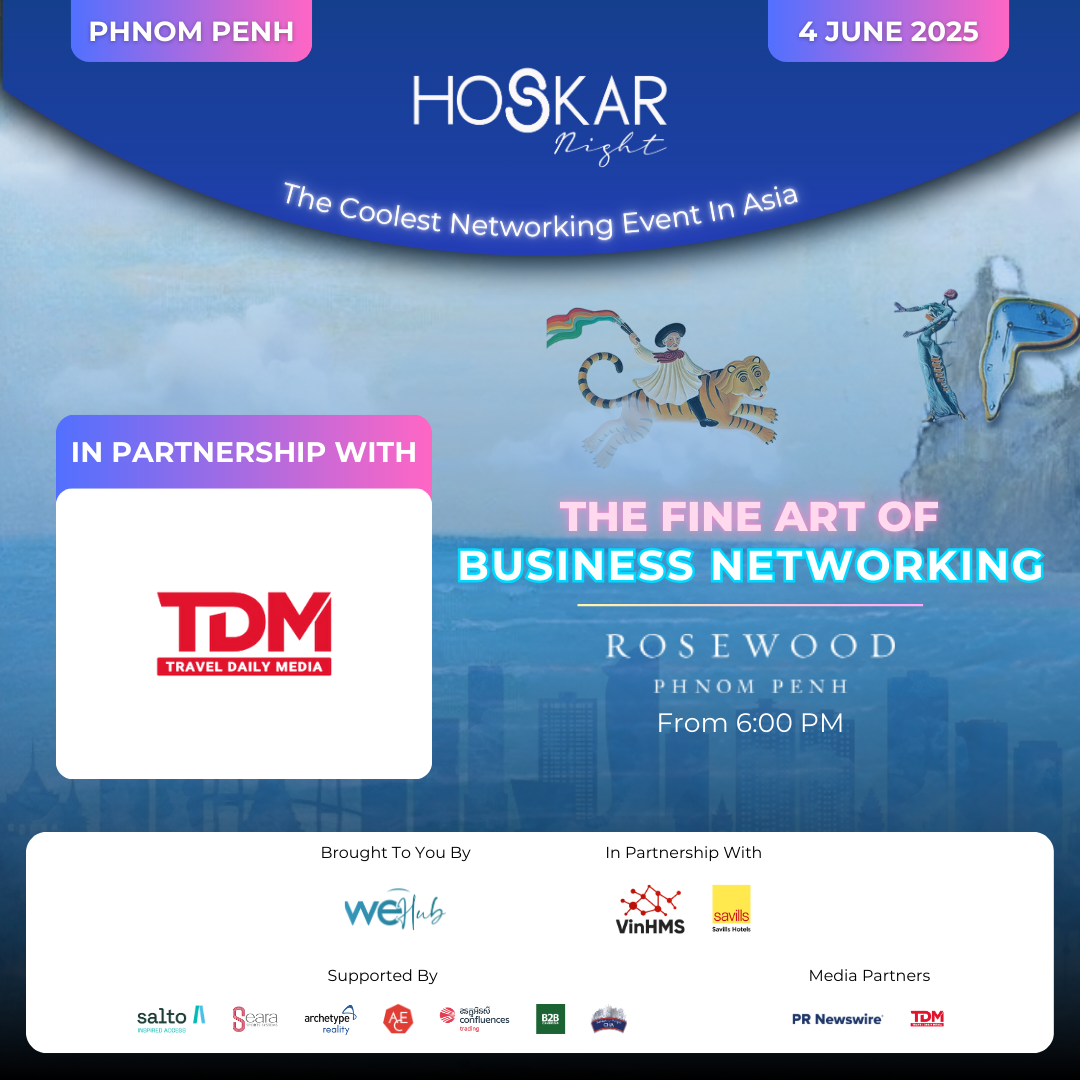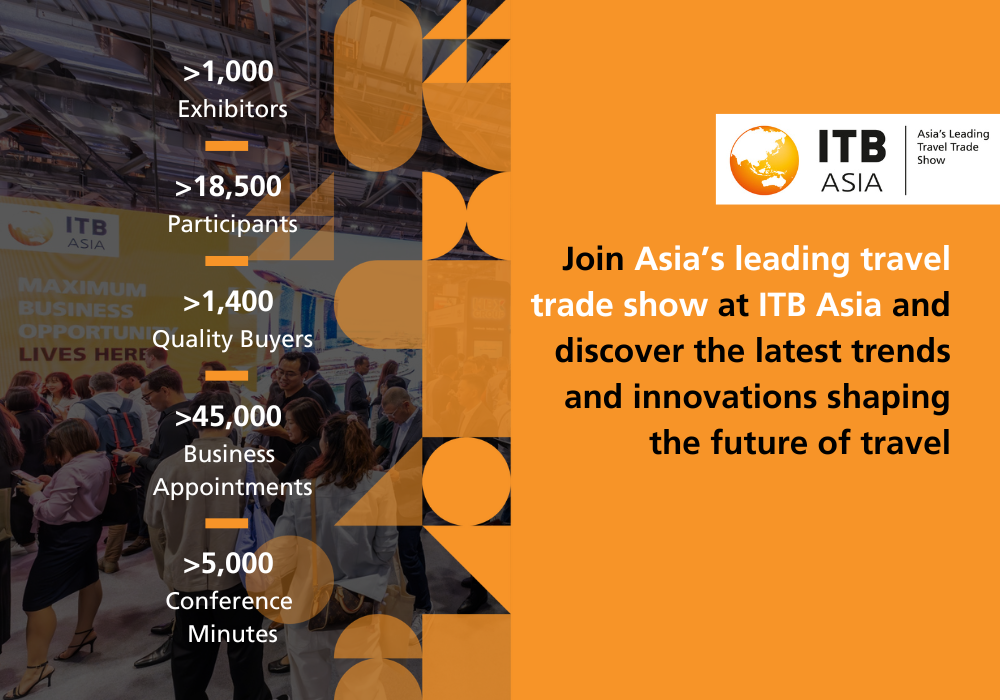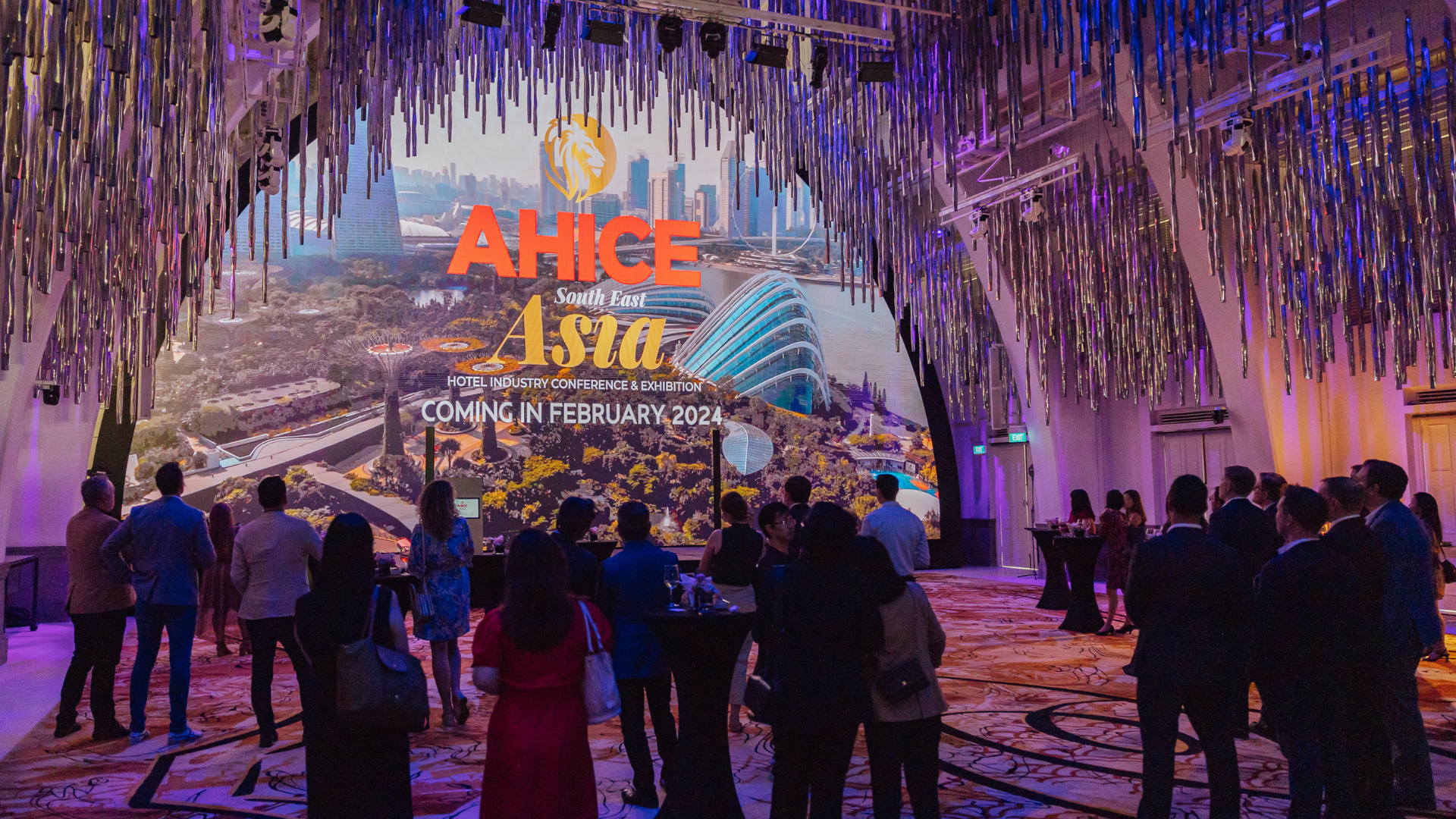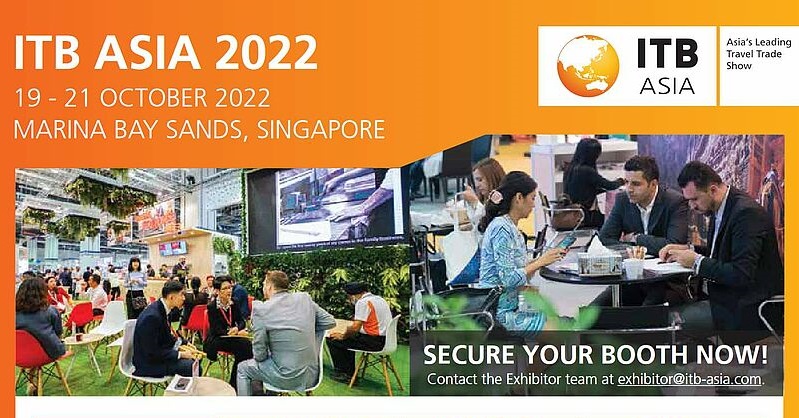Search Results forAsia-Pacific
New Routes and Relaxed Visas Fuel Asia-Pacific Travel Growth: PATA
Representative Image The Pacific Asia Travel Association (PATA) gathered insights from members attending WTM 2025, where the region was very much in the spotlight. Despite hints of a short-term slowdown from Europe, optimism prevailed throughout the show, fuelled by new air routes, relaxed visa policies, and the continued diversification of Asia’s tourism offering. PATA member Sandra Kwan, UK Trade Sales and Marketing Manager for the Okinawa Convention & Visitors Bureau (OCVB), reported strong engagement throughout the event. “Strong interest in Okinawa was evident, we connected with new travel companies, some of whom were unfamiliar with the prefecture and were pleasantly surprised by its diverse offerings beyond beaches, as well as its convenient connections to nearby destinations such as Taiwan, South Korea, and China.” Kwan noted that operators were keen to feature Okinawa more prominently within Japan itineraries. Gavin Dixon, PATA Committee member and Product Manager Africa/Asia at Freedom Holidays, highlighted that Sabah tourism is experiencing a strong peak period for arrivals, particularly in September. “We discussed the ongoing FCDO advisory against travelling to the north and east coast islands (e.g. Selingan Island). There is hope that the British embassy will send a delegation to evaluate the safety of the area, along the lines of a similar trip that took place to a different coast in 2024, although nothing is confirmed.” Dixon added that discussions with the Vietnam Tourist Board centred on the potential reopening of a UK office in 2026. “Given that the UK is their top European source market, the trade could benefit from having someone to promote the destination. There are lots of new and exciting developments, such as Bhaya Cruises who launched a new luxury boat, ‘Soul’ this summer which has a wellness focus, signalling a move towards more contemporary travel in Vietnam.” There is an overall feeling that after 3 years of unprecedented growth from Europe/UK, the last 3 months have slowed. Sam Collins, PATA Committee member and Product Manager at Best at Travel has observed that shift in momentum. “Despite this, Thailand, Vietnam, Cambodia, and Laos reported steady interest, supported by new routes and visa-free entry for UK travellers. Cambodia’s strong presence at WTM inspired confidence in further growth for 2026.” Airlift to Asia continues to expand significantly. Norse Atlantic launched new routes from London Gatwick and Manchester to Bangkok from October 26, 2025. British Airways has boosted capacity from London Gatwick to Bangkok, alongside its daily London Heathrow flights to Kuala Lumpur and twice-daily service to Tokyo Haneda. Virgin Atlantic recently announced the first-ever direct flight from London Heathrow to Phuket, commencing October 2026. Cathay Pacific has enhanced its premium experience with the new “Aria Suite” business class on its London–Hong Kong route, while London Gatwick further strengthens Asian connectivity with services to Singapore, Shanghai, and Baku. Confidence was expressed by Malaysia, notable Sarawak and Sabah, both citing strong UK demand and forecasts for continued expansion. Helen Wheat, PATA Committee member and Destination Manager for Travelbag, summed up the show’s energy: “5 years post pandemic, and it’s starting to feel as though WTM London is back in business with bustling halls and full meeting schedules. This year's show offered a wide range of suppliers from across the Pacific-Asia region and it was great to see secondary destinations investing in WTM with larger stands.” Wheat also praised the Philippines for its stand out presence. “It is still noticeable that some major players are no longer supporting the show (such as Malaysia Tourism) and the ownership falls to DMCs and hoteliers to pick up the baton.” Notably, Wheat commented “...partnerships and flexibility remain key as budgets tighten globally - wiggle room from both sides of the table are required in order to nurture mutually beneficial relationships to grow travel from the UK.” In summary, WTM 2025 was a success for Pacific Asia with great destination representation that showcased the region's strengths and diversity. There is a clear appetite for authentic, sustainable and experience-rich travel. There are no signs of tourism slowing with the development of new hotels, products, tours and airline routes on the horizon for 2026 and beyond.
Asia-Pacific medical tourism attracts patients with cost-effective professional care
Medical tourism has, in recent years, become a major growth sector for the Asian travel and tourism sectors. This does not really come as a surprise, given how travellers have made their way to the region over the centuries to seek out cures for a variety of maladies. In the context of the 21st century, Asia has gained greater popularity as a destination for aesthetic medicine and cosmetic surgery, thanks mostly to surgical innovations offered in India and Thailand, as well as pharmaceutical advances from Japan and South Korea. But medical tourism in the region goes far beyond the cosmetic and well into more specialised, life-saving specialisations like cardiology, oncology, pulmonary care, and even reproductive and fertility care. In today’s feature, we take a closer look at the state of medical tourism within the Asia-Pacific, who the current key players are, and what the sector stands to evolve into. Per Grand View Research's 2023 report, ENT surgery took up the lion's share of the medical tourism market in asia, followed by neurosurgery and oncology Why the world comes to Asia for medical care Admittedly, cost is the biggest factor that has been driving patients, especially those from western nations, to make their way to Asia for consultations and treatments. Going by a 2024 report from Healthcare Asia, the cost of comprehensive treatments (which is to say consultation + procedure + recovery / post-surgical therapy) could drop by up to 80 percent if done in Malaysia, 40 percent in Singapore, and 75 percent in Thailand depending on the modalities chosen for the patient. Thanks to this, the size of the Asia Pacific medical tourism market stood at US$10.32 billion as of end-2023 and is expected to grow at a rate of around 26.4 percent per annum till 2030. Aside from cost, Grand View Research pointed out that patients also appreciate the greater availability of skilled medical professionals as well as specialised treatments on offer at highly competent and well-equipped facilities throughout the region. The patient influx is further fuelled by the way numerous hospitals and healthcare facilities throughout Asia have teamed up with their peers overseas to boost their respective capabilities, enabling them all to work with a much wider clientele base. Likewise, such partnerships entail exchange of knowledge, technology, and best practices, improving overall competence across the board. By consolidating resources and expertise, organizations can enhance their market presence and competitive advantage. It has also helped that governments throughout the region have been implementing policies supporting the medical tourism sector, though the framework tends to differ between nations. Any regulations implemented by government agencies are usually centred on compliance with global quality standards, patient safety, and ethical practices in the medical tourism industry. It is interesting to note at this point that the most common procedures that draw foreign patients to the region are those involving ear, nose, and throat (ENT) surgery, oncological treatments for cancer and pre-cancerous conditions, and neurosurgery. Key players in the Asia-Pacific medical tourism sector According to the research site Mordor Intelligence, while many medical organisations throughout the region are engaged in the practice of medical tourism, there are five in particular that stand out. These are as follows: Apollo Hospitals Enterprise Ltd (India) Based in Chennai, the company currently operates a network of 71 owned and managed hospitals, and has been around since 1983. It has excelled in the management of lifestyle diseases such as coronary issues and diabetes; pediatric and women's care, as well as modalities for improving fertility. Apollo likewise prides itself on pharmaceutical innovation; Bumrungrad International Hospital (Thailand) Since it first opened in 1980, Bumrungrad has since grown into Southeast Asia's largest privately-owned hospital and has made its reputation as a go-to institution for medical tourism. The hospital's areas of specialisation run the gamut from allergy treatment and gynaecological issues to holistic care and various disciplines of cardiology. According to Bumrungrad's website, the hospital treats an average of 550,000 local and foreign patients a year, with foreigners coming in from 190 countries; Fortis Healthcare Ltd (India) Headquartered at the Fortis Memorial Research Institute in Gurgaon, Fortis has the distinction of having more than 20 understandings with the health departments of governments around the world. On average, it treats over 200,000 foreign patients from 175 countries a year, doing treatments and procedures at its 27 hospitals throughout India. Fortis is a leading destination for cancer treatment as its primary field of specialisation is oncology, more specifically cancers of the endocrine and circulatory systems; KPJ Healthcare Berhad (Malaysia) Located in Kuala Lumpur, KPJ Healthcare prides itself on a "start to finish" approach with regard to medical tourism, helping patients, their families, and primary care providers throughout the process from getting necessary visas and other permits to post-procedural care. KPJ's dedicated International Patient Centre provides ample guidance to foreign patients as to what to expect from their treatment along with any socio-cultural matters they may encounter throughout their stay in Malaysia. The company's core competencies revolve around cardiology, oncology, and orthopaedic surgery; and Raffles Medical Group (Singapore) It is interesting to note that over 35 percent of Raffles' patients are from overseas, hailing from more than 100 nations worldwide. Offering an extensive range of state-of-the-art modalities at its facilities, the company offers comprehensive care packages for potential patients, placing them in the hands of its team of globally-competent experts. The Raffles International Patient Centre likewise ensures personalised care for each patient, making them feel safe and cared for in a foreign land. Aside from cardiology, oncology, and orthopaedics, Raffles has also gained acclaim for fertility treatments. The downside is... However, despite the great economic benefit of medical tourism to the region, along with the recognition it accords to the medical professionals operating within, the sector does have a serious downside to it. Writing for the site News Medical in 2022, Dr Tomislav Meštrović, MD, PhD pointed out that medical tourism poses a number of risks for patients flying overseas for treatments and procedures. With regard to patient risks, Meštrović pointed out the potential for nosocomial infections, more commonly known as hospital-acquired infections, especially if patients are being treated in developing nations wherein the standards for medical hygiene may not be at par with those overseas. Seeking treatment in developing nations also poses the risk of patients getting infected by multiresistant organisms, particularly noroviruses which commonly cause acute gastroenteritis, as well as mycobacterial infections following cosmetic surgical procedures. At the same time, foreign patients may be exposed to infections that they would not normally encounter in their part of the world, thus posing a public health risk when they return home as they unwittingly become carriers of contagion. Another cause for concern is tissue rejection among patients who go to the Asia-Pacific for organ transplants, leading to greater expense due to secondary procedures and an extended convalescence period. On the other hand, nations that have become leading venues for medical tourism also face a number of issues. In a recent article for Medical Tourism Magazine, medical researcher Dr Prem Jagyasi explained that those travelling overseas for medical procedures, as stated above, stand to carry the potential of contagion into their home countries, bringing in hitherto unknown strains of infectious microorganisms like bacteria, fungi, and viruses. As such, there is the risk of outbreak and epidemic involved, especially if a significant volume of travellers makes their way back from a country with ongoing health issues among its people. At the same time, citizens of countries involved in medical tourism may find themselves shunted to a corner, especially by private hospitals and medical facilities that may opt to give priority to foreign patients who are willing and ready to pay premium prices for treatment. Medical tourism in this context also runs the risk of medical professionals giving more of their time and ability to visiting patients as opposed to their core local clientele. An influx of foreign nationals into a country’s medical tourism sector runs the same risks as conventional overtourism: a strain on available resources, inconvenience for local populations, as well as a greater effluvium when it comes to environmental waste. Taking all these into consideration, what the World Medical Association (WMA) declared at its 69th General Assembly in 2018 still holds water at this point: If not regulated appropriately, medical tourism may have medico-legal and ethical ramifications and negative implications, including but not limited to: internal brain drain, establishment of a two-tiered health system, and the spread of antimicrobial resistance. Therefore, it is imperative that there are clear rules and regulation to govern this growing phenomenon. How Asia can do even better Despite the fact that the WMA made its recommendations in 2018, a good two years before the pandemic hit, the bulk of these suggestions continue to have practical value in the contemporary practice of medical tourism. First of all, governments need to to carefully consider all the implications of medical tourism to the healthcare system of a country by developing comprehensive, coordinated national protocols and legislation for medical tourism in consultation and cooperation with all relevant stakeholders. Per the recommendations, these protocols should assess the possibilities of each country to receive medical tourists, to agree on necessary procedures, and to prevent negative impacts to the country´s health care system. Second, governments and service providers need to ensure that medical tourism does not negatively affect the proper use of limited health care resources or the availability of appropriate care for local residents in hosting countries. In this context, special attention ought to be paid to treatments with long waiting times or involving scarce medical resources. Also, medical tourism must not promote unethical or illegal practices, such as organ trafficking; thus relevant authorities, including governments, should be able to stop elective medical tourism where it is endangering the ability to treat the local population. Finally, welcoming foreigners in as medical tourists should never be allowed to distort the normal assessment of clinical need and, where appropriate, the development of waiting lists, or priority lists for treatment. Once accepted to treatment by a health care provider, medical tourists should be treated in accordance with the urgency of their medical condition. Whenever possible patients should be referred to institutions that have been approved by national authorities or accredited by appropriately recognised accreditation bodies.
Visa presents its 2025 Money Travels remittances report for the Asia-Pacific
Global digital payments platform Visa announced the results of its annual Money Travels: 2025 Digital Remittances Adoption Report on Wednesday, 13th August. The report is based on responses from 44,000 senders and receivers across 20 countries and territories, tracking remittance trends around the world, including Asia Pacific, a key region in the $905 billion global remittance landscape. Key findings in this year’s survey show digital applications as the most popular method for sending and receiving remittances, and ease of use, safety, privacy, and security as the top four user experience benefits driving such preference. According to Visa’s senior vice-president and head of commercial and money movement solutions in the Asia-Pacific Chavi Jafa: “Remittances have long driven growth across Asia Pacific, uplifting many economies in the region. The clear shift to app-based remittances reflects the region’s demographics, the growing prominence of digital payment modes, as well as user preferences for easy, safe and quick ways to send and receive money. This shift is an important one for banks, remitters and fintechs to note as it will shape how they engage and serve evolving consumer expectations.” Key findings for the Asia-Pacific Digital apps remain the most popular and are perceived as the fastest option Digital apps are the most preferred channel to send/receive remittances in Asia Pacific, with usage rates reaching its highest in India (74%/76%), the Philippines (74%/66%), and Singapore (70%/75%). Japan is also seeing steady growth, with digital app usage rising by 10% (58%/56%) in 2025 compared to the previous year. Over half of the respondents in the Philippines (73%/73%), Australia (58%/55%), Singapore (67%/66%), and India (55%/53%) perceive digital payments as the fastest way to access funds (73%). Most Asia Pacific remittance users surveyed report experiencing no issues with sending/receiving digital remittance transfers across all Asian markets, most positively in Australia (48%/53%), Japan (37%/41%), Singapore (36%/37%), and Mainland China (38%/31%, rising significantly since 2024 at +13%/+8%). Remittance rationale varies across the region Contributing to accounts/investments is a primary reason to send/receive remittances across several markets including Mainland China (45%/36%), Singapore (38%/33%), and Japan (27%/23%). Sending for general/specific humanitarian need is a key reason for remittances, cited by respondents in Mainland China (45%/33%), India (40%), Singapore (27%), and Australia (25%). Sending remittances for an unexpected need was highest in India (44%), the Philippines (41%), and Australia (31%). Receiving regular remittances was cited by approximately a third of respondents in the Philippines (39%), Mainland China (34%), and India (30%). Security and convenience outweigh pain points such as fees Digital apps are viewed as the most secure way to send/receive remittances in Asia Pacific, with top responses from India (50%/53%), Australia (49%/45%), and Singapore (44%/42%). Ease of use to send/receive digital remittances was noted most by respondents in Singapore (51%/51%) the Philippines (48%/54%), Japan (47%/42%), and Australia (42%/40%). Digital app fees for sending/receiving remittances were highlighted as a top pain point across Asia Pacific, led by the Philippines (43%/30%), India (36%/33%), and Singapore (32%/32%). Similarly, high fees were noted as the top pain point for sending physical remittances across all markets, with top responses from the Philippines (45%/29%), India (41%/37%), Singapore (38%/30%), Australia (29%/30%). Inconvenience and long travel distances remain key challenges for sending physical remittances, with respondents in India (36%) and Mainland China (27%) citing travel as a barrier. In Australia and Singapore, 29% of respondents each noted the physical remittance process as inconvenient and time-consuming alongside concerns about high fees. Across most Asia Pacific countries surveyed, the perceived security of physical remittances was low (3%-6%), with Mainland China reporting slightly higher levels of confidence (10%-12%). A need to constantly innovate With one billion people relying every year on remittance services and platforms, Visa continues to innovate and build solutions to enable payments businesses to enhance operational efficiency in money movement and broaden financial access for their customers. Rhidoi Krishnakumar, vice-president and head of Visa Direct in the Asia-Pacific, said: “Remittances have long been a lifeline across Asia Pacific, and they will continue to play a vital role in uplifting communities and livelihoods. At the same time, many small businesses are also beneficiaries of remittances driving local growth in local economies.” Visa recognises the enduring purpose of our role in delivering remittances on behalf of its clients and continues to innovate and build solutions to enable more efficient, reliable and secure ways to move money. With that in mind, Visa works in collaboration with global remitters, such as MOIN, WireBarley, Money Chain World Remittance and EzRemit, to help enable efficient money movement through digitised remittances.
Wei Daxun is TUMI’s new brand ambassador in the Asia-Pacific
International travel, lifestyle and accessories brand TUMI announced that Chinese actor Wei Daxun is its new brand ambassador for the Asia Pacific region. The announcement follows the opening of TUMI’s new Shanghai flagship store, both serving as key milestones in the brand’s continued global expansion and commitment to the global traveler. TUMI creative director Victor Sanz said of the actor: "Wei brings an energy and authenticity that seamlessly aligns with TUMI’s values. He is a true reflection of the modern global traveler: intentional, dynamic, and always in motion.” Wei himself remarked: "It's an honour to join the TUMI family. I've long admired the brand's dedication to timeless quality and purpose. Their collections are designed for real life, and they move with me wherever I go, whatever I do.” The brand proudly adds Wei Daxun to its prestigious and multifaceted ambassador roster alongside beloved McLaren Formula 1 Team Driver Lando Norris, LPGA Tour Professional Golfer Nelly Korda, and PGA Tour Professional Golfer Ludvig Åberg. Through precision-led design, global storytelling and acclaimed talent, TUMI continues to distinguish itself as a leader in the luxury travel and lifestyle space. The perfect ambassador for the contemporary scene Recognised as one of China’s most celebrated actors, Wei Daxun has captivated audiences across Asia with his versatility, charisma, and sincerity. From film and television to music and philanthropy, his multifaceted career has earned him both critical acclaim and the lasting admiration of fans. Driven by professionalism, discipline, and a relentless pursuit of excellence, Wei naturally embodies the values that have defined TUMI for the past 50 years: precision, creativity, and a spirit of constant forward motion. The campaign featuring Wei captures the quiet intensity of his lifestyle as he moves fluidly between cities, sets, and fleeting moments. Wei makes his official debut in the third and final chapter of TUMI’s 19 Degree Lite Uncompromisingly Light campaign, which celebrates innovation and the freedom of movement through the lens of those who live life constantly in motion. Directed by David Pun and shot by renowned photographer GK, the campaign captures the quiet intensity of Wei’s lifestyle as he moves fluidly between cities, sets, and fleeting moments. Along the way, he’s equipped with travel companions that match his rhythm: the ultra-lightweight 19 Degree Lite and the versatile Alpha Bravo collection. The story highlights how 19 Degree Lite keeps pace with him. adapting seamlessly and supporting every leg of the journey, while the Alpha Bravo Navigation Backpack offers the reliability and functionality he needs as someone who is always on the move. For Wei, home isn’t a place: it’s a feeling; and in the consistency of what he carries, he finds the space to move with confidence and ease, no matter where he’s headed.
AAPA: Asia-Pacific carriers earned over US$7 billion in 2024
The Association of Asia Pacific Airlines (AAPA) released preliminary 2024 financial performance figures for its members today, 11th July. The initial report shows that carriers throughout the region earned US$7.3 billion in combined net profits in 2024, supported by strong growth in passenger traffic and a marked recovery in cargo volumes. This was despite needing to deal with a challenging operating environment due to ongoing supply chain constraints and rising operating costs. The year that was In 2024, robust growth in business and leisure travel both within the region and globally resulted in a 19.9 percent increase in system-wide passenger demand, in revenue passenger kilometer (RPK) terms. Meanwhile, a surge in e-commerce activity and disruptions to maritime shipping contributed to a solid 13.9 percent increase in international air cargo demand, as measured in freight tonne kilometres (FTK), following two consecutive years in decline. Asia Pacific airlines recorded a 7.7 percent increase in operating revenue, reaching a combined total of US$213.9 billion in 2024, compared to US$198.6 billion in 2023. Aggregated passenger revenue rose by 8.8 percent to US$170.4 billion, while cargo revenue climbed by 10.3 percent to US$23.2 billion. Robust traffic growth more than offset the impact of a 9.2 percent decline in passenger yields to 8.0 US cents per RPK, and a 3.2 percent decline in air cargo yields to 32.7 US cents per FTK. Combined operating expenses rose by 8.4 percent to US$199.8 billion for the year, due mainly to a 10.1 percent increase in non-fuel expenditure to US$138.9 billion. Persistent supply chain challenges, including shortages of spare parts, aircraft delivery delays and aircraft groundings due to engine issues, drove up maintenance and leasing costs. Likewise, inflationary pressures also contributed to higher staff expenditure and airport charges. Meanwhile, fuel expenditures were up 4.8 percent to US$60.8 billion, in tandem with an increase in flights operated. The increase was partly mitigated by a 13.4 percent decline in jet fuel prices to an average of US$98.1 per barrel in 2024. The share of fuel expenditure as a percentage of total operating costs averaged 30.5%, down from 31.5 percent in 2023. A year of resilience AAPA director-general Subhas Menon said of 2024’s overall performance: “2024 was a year of remarkable resilience for Asia Pacific airlines, as carriers confronted multiple challenges while achieving strong growth in both passenger and cargo demand, along with record passenger load factors. However, airlines were not immune to cost pressures. The marked increase in operating expenses, particularly non-fuel costs, underscored the impact of supply chain constraints. Despite this, Asia Pacific airlines demonstrated their adaptability, delivering operating margins of 6.6 percent for the year, just 0.6 percentage points under the 7.2 percent in 2023.” With regard to his forecast, Menon pointed out how the region’s carriers continue to face considerable headwinds, including elevated operating costs and ongoing supply chain disruptions. He added that geopolitical tensions may lead to renewed volatility in oil and currency markets while air cargo markets may soften further, as uncertainties over trade negotiations dampen demand for air shipments. Despite this, he expressed optimism with regard to air passenger and cargo demand owing to numerous factors. Menon said: “Air passenger demand is expected to remain relatively resilient, amidst continued growth in the region’s economies. In response, airlines are actively refining their business strategies, maintaining cost discipline while pursuing new revenue streams. At the same time, carriers are investing in fleet modernisation, digital innovation, and enhanced service offerings to deliver a high-quality travel experience.”
Banyan Group comes away with 15 wins at the Asia-Pacific Property Awards
Pioneering Thai hospitality developer Banyan Group reaffirmed its renown among Thailand’s premier property developers by taking home 15 top honours in the prestigious Asia-Pacific Property Awards 2025-26. The record tally of accolades cemented Banyan Group as the most awarded developer in Thailand for the second consecutive year. This also makes the company Thailand’s most successful award-winner of all time with a total of 64 honours to date. Banyan Group founder and executive chairman KP Ho declared: “The International Property Awards are a world-renowned mark of excellence. This continuing recognition is a true testament to the hard work and talent of our entire team. Our dedication to innovation, exceptional design, and creating amazing experiences for our customers has made us a leader in Thailand's luxury residential development.” Best in the region The latest honours include two 5-star awards with two nominations for "Best of Asia". Laguna Lakelands, a visionary master plan for an eco-friendly residential community unfolding over the next 5 to 15 years, was recognised for Best Development Marketing, with Laguna Beach Residences Bayside nominated for best luxury condominiums. Among the ‘Best in Thailand’ awards, Skypark Elara Lakelands was honoured for top condominium development. Luxury pool villas at Banyan Tree Lake Residences Yara were awarded for residential villa development of 10-19 units and luxury residential property. Townhouses at Banyan Tree Beach Residences Nammu won the award for luxury residential property and luxury residential development of 10-19 units. Laguna Lakelands Waterfront Villas were honoured for best residential property development of 10–19 units, as well as best residential property. Laguna Beach Residences Bayside were recognised for best residential development of 20+ units as well as top luxury condominium development. Finally, upcoming Skypark Elara Lakelands and Residences at Garrya Phuket were also both honoured for their interior show homes. Banyan Group also won top honours for best developer website. Raising the bar for luxury residential developments Best known for its award-winning hotels and resorts, Banyan Group is increasingly focusing on luxury private residences, primarily in Thailand but also internationally. A recent Savills report ranked the group top in Asia and 5th globally in the total value of its branded residential projects. With demand soaring for luxury lifestyle real estate from both international and Thai investors, the group plans to release luxury residential real estate worth over US$1 billion in Phuket alone in the next 2-3 years. New projects driving growth at the iconic Laguna Phuket include ultra-luxe Banyan Tree Beach Residences Oceanus condos on the doorstep of Bang Tao Beach; and chic new condos at Laguna Lake Residences Aster, neighbouring Bang Tao’s popular Boat Avenue entertainment district. Also being unveiled soon is the biggest beach club in Phuket, Rava Beach Club, occupying an exclusive 150-metre shoreline of Bang Tao Beach, complete with infinity pools, marking yet another outstanding facility for residents.
IT&CM Asia and CTW Asia-Pacific 2025 to champion thought leadership and wellbeing in MICE
IT&CM Asia and CTW Asia-Pacific 2025 returns to Bangkok this September, honouring its long-standing commitment to deliver powerful thought leadership, inclusive travel experiences, and robust educational content. This year’s three-day event will run from 23rd to 25th September, bringing together MICE and corporate travel professionals from all over the region. The programme slate for 2025 will include a series of conferences, networking activities, as well as hands-on workshops. Where learning and thought leadership take centre stage Day one of the conference will centre on education and skill-building, supported by leading global associations such as the Global MICE Collaborative (IAEE, MPI, SITE), ICCA, and GBTA. Delegates can pre-register for the MICE Fundamentals: Conferences, Exhibitions & Incentive Events certification course by the Global MICE Collaborative. Course Highlights: Learn from seasoned MICE professionals Participate in interactive assignments and live case studies Network with peers and experts Gain tools for career growth Access practical planning resources SITE chief executive Annette Gregg said of their participation: “The Global MICE Collaborative is thrilled to be the educational partner with TTG Events for IT&CM Asia and CTW APAC 2025. This certification builds a strong foundation for professionals in emerging MICE markets.” ICCA will lead a Sustainable Gastronomy in MICE activity that explores the wonders of gastronomy through the lens of sustainability and innovation. Delegates will take part in interactive experiences that encourage knowledge sharing and promote responsible practices within the business events landscape. Delegates will participate in a series of hands-on activities that encourage interaction, collaboration, and cultural appreciation, providing a refreshing break from traditional business meetings while facilitating networking in an informal setting. Powered by Global Business Travel Association (GBTA), CTW Asia-Pacific brings thoughts and ideas for delegates to have a discussion on the topic of business travel and its future resilience, with a focus on sustainability, policy, and traveller well-being. What’s on this year’s slate? The conference agenda is crafted to meet the diverse needs of buyers and suppliers, providing actionable insights and strategic foresight: Opening Keynote – Fireside Chat: A discussion on wellness in business events and corporate travel, exploring how mindfulness, delegate experience design, and stress reduction are becoming key to enhancing event impact. The session will also introduce TCEB’s new 'MEET WELL' campaign, a national initiative addressing industry demands for wellness, sustainability, seamless connectivity, and ROI-driven event design. Express Mindful Moment – “Your Smiling Heart”: A 10-minute mindfulness session led by Dr Buathon Thienarrom, using meditative sounds to promote self-awareness. Speed-Dating Session: 5-minute roundtable engagement for selected buyers and exhibitors to encourage quality networking and business lead generation. Tastebud Lab Conference: A roundtable exploring how food as a wellness driver is reshaping the hospitality, health tourism, and MICE landscape. From personalised nutrition, future food systems, and sustainable culinary experiences, the session uncovers how destinations can innovate for competitive advantage. But the learning goes on for both media and hosted buyers after the event thanks to a three-day/two-night tour that will enable them to explore a different side of Thailand. This special post-show experience showcases lesser-known, yet dynamic MICE destinations beyond Bangkok: Phitsanulok – Sukhothai (North): Discover the UNESCO-listed Sukhothai Historical Park and well-preserved temples with unforgettable sunset views. Krabi (South): Immerse in coastal nature and enjoy freshly caught seafood. Take in the breathtaking scenery of Krabi. Khon Kaen (North-East): Experience the vibrant culture, culinary scene, and high-quality silk production unique to Khon Kaen. These curated tours strengthen destination marketing efforts, enabling first-hand buyer engagement with Thailand’s regional MICE capabilities. Teaming up with the industry’s best and brightest IT&CM Asia and CTW Asia-Pacific 2025 is backed by a distinguished network of global and regional collaborators, whose contributions help elevate the event experience: Destination Partner: Thailand Convention & Exhibition Bureau (TCEB) Official Venue: Centara Grand and Bangkok Convention Centre at CentralWorld Partner Airlines: Firefly, Malaysia Airlines, Qatar Airways, Singapore Airlines, Thai Airways International Supporting Organisations: AOT, BMA, TAT, TCT, TICA Technology Partners: EventsAir Thought Leadership Partners: Global MICE Collaborative, IAEE, MPI, SITE, ICCA, Tastebud Lab Industry Partners: Korea MICE Association, PCAAE eSIM Partner: Jetfi mobile
Criteo’s Spring 2025 Travel Pulse Report covers traveller sentiment in the Asia-Pacific
Commerce media company Criteo revealed key insights from its Spring 2025 Travel Pulse report today, 14th May. Highlighting emerging travel trends, booking patterns, and evolving traveller sentiment in Asia Pacific, the report was compounded from data gathered from over 100 travel partners in APAC, including around 20 from Southeast Asian market. As such this report serves as a timely snapshot of travel patterns in Q1-2025, whilst offering valuable context for brands gearing up for the summer holiday season. The report in brief In the first quarter of 2025, travel demand in APAC remained resilient, with hotel bookings up 10 percent and air bookings rising 7 percent. In both categories, the region outperformed the Americas, Europe, the Middle East, and Africa, all of which saw declines across most categories. Between July and October 2024, APAC’s travel bookings also exceeded retail sales by over 12 index points, underscoring sustained interest in travel beyond peak periods. Giving Southeast Asia a closer look, the trend was most pronounced during June and July 2024, with travel bookings surpassing retail sales by more than six index points. This mid-year surge in bookings suggests travellers are planning further ahead for year-end trips, searching for an average of 52 days in advance for multi-day stays. This growing momentum presents an opportunity for marketers to activate seasonal campaigns earlier in the year to engage high-intent travellers at the planning stage. How inflation and rising costs are changing the game Rising costs are influencing how people travel, with 45 percent of global travellers reporting that higher expenses are impacting their plans. However, travel remains a priority, seeing how 50 percent of travellers still view it as an essential part of their lifestyle. This sentiment is strong in APAC, where a deep passion for travel endures despite increasing costs, reinforcing its role as a valuable break from routine and a source for new experiences, and a change of environment. The report also uncovers evolving traveller interests and purchase behaviours; notably, 60 percent of APAC travellers prioritise food-related attractions, presenting an opportunity for marketers to spotlight local cuisine, promote culinary tours, and align with food-centric experiences. Affluent travellers from this region emerged as leading consumers in the Health & Beauty category across multiple markets and are twice as likely to purchase luxury items compared to the average traveller. Similarly, affluent travelers from Southeast Asia are 32 percent more likely to buy makeup and 27 percent more likely to invest in skincare products. The use of tech for travel planning is up Another key trend is the rising adoption of AI tools among APAC travellers for itinerary planning and travel inspiration, with full trip planning and flight bookings witnessing an increase year-on-year in Q1 2025. This shift signals an opportunity for travel marketers to ensure their content is optimised for AI discovery and that product data is structured to appear in AI-generated recommendations. According to Criteo’s managing director for venture markets in APAC Taranjeet Singh: “Travel planning today is shaped by fast-changing trends, shifting consumer priorities amid macroeconomic changes, and the growing role of AI in decision-making. The Spring 2025 Travel Pulse Report sheds light on how these dynamics are influencing traveller behaviour and helping travel marketers personalise experiences and reach the right audience, with the right message, at the moment it matters most.”
Asia-Pacific airlines saw 9.6% YOY demand growth for air cargo in March: IATA
Representative Image The International Air Transport Association (IATA) released data for March 2025 global air cargo markets showing that the total demand, measured in cargo tonne-kilometers (CTK), increased by 4.4% compared to March 2024 levels (+5.5% for international operations), a historic peak for March. Capacity, measured in available cargo tonne-kilometers (ACTK), expanded by 4.3% compared to March 2024 (+6.1% for international operations). “March cargo volumes were strong. It is possible that this is partly a front-loading of demand as some businesses tried to beat the well-telegraphed 2 April tariff announcement by the Trump Administration. The uncertainty over how much of the 2 April proposals will be implemented may eventually weigh on trade. In the meantime, the lower fuel costs—which are also a result of the same uncertainty—are a short-term positive factor for air cargo. And, within the temporary pause on implementation we hope that political leaders will be able to shift trade tensions to reliable agreements that can restore confidence in global supply chains,” said Willie Walsh, IATA’s Director General. Several factors in the operating environment should be noted: March volumes typically rise after a lull in February, and this single-digit increase is in line with pre-COVID growth trends. Jet fuel prices dropped 17.3% year-on-year, marking nine straight months of year-on-year declines. The sharp rise in US tariffs and new trade rules, especially the 2 May ban on duty-free imports from China and Hong Kong, may have prompted companies and buyers to make purchases in advance to avoid significant import fees. World industrial output grew 3.2% year-on-year, and trade volumes expanded 2.9%. Many key Consumer Price Inflation (CPI) indices fell: US inflation was 2.4%, down 0.4 points from February, EU CPI was 2.5% and Japan’s rate fell 0.1% to 3.6%. China remains in deflation but this eased to -0.1%. Air cargo market in detail - March 2025 World March 2025 (% year-on-year) share1 CTK ACTK CLF (%-pt) CLF (level) TOTAL MARKET 100.0% 4.4% 4.3% 0.0% 47.5% Africa 2.0% -13.4% 10.8% -10.4% 37.1% Asia Pacific 34.2% 9.3% 7.6% 0.8% 48.6% Europe 21.5% 4.4% 2.8% 0.9% 59.6% Latin America 2.9% 5.6% 5.2% 0.1% 39.5% Middle East 13.6% -3.3% 0.9% -2.0% 47.6% North America 25.8% 3.7% 2.6% 0.5% 40.7% Note 1: % of industry CTK in 2024 March Regional Performance Asia-Pacific airlines saw 9.6% year-on-year demand growth for air cargo in March, the strongest growth among the regions. Capacity increased by 11.3% year-on-year. North American carriers saw a 9.5% year-on-year increase in demand growth for air cargo in March. Capacity increased by 6.1% year-on-year. European carriers saw a 4.5% year-on-year increase in demand growth for air cargo in March. Capacity increased 2.0% year-on-year. Middle Eastern carriers saw a -3.2% year-on-year decrease in demand growth for air cargo in March. Capacity increased by 0.8% year-on-year. It’s possible the weakness in this market is due to year-on-year comparison with the strong growth at the start of 2024 resulting from disruption to Red Sea maritime freight. Latin American carriers saw 5.8% year-on-year demand growth for air cargo in March. Capacity increased 4.7% year-on-year. African airlines saw a -13.4% year-on-year decrease in demand for air cargo in March, the slowest among the regions. Capacity increased by 10.5% year-on-year. Trade Lane Growth: The Europe-North America route was the busiest trade lane in March. The largest trade lane by market share, Asia-North America, also grew strongly, possibly encouraged by front-loading shipments ahead of potential increased tariffs. Europe-Middle East and Africa-Asia were the only trade lanes to decline in March. Trade Lane YOY Growth Notes Market Share of Industry Asia-North America +7.3% This route has resumed growth after a revised fall of 0.5% in February 24.4% Europe-Asia +8.3% 25 consecutive months of growth 20.5% Europe-Middle East -7.5% N/A 5.7% Middle East-Asia +2.9% N/A 7.3% Within Asia +5.5% 17 consecutive months of growth 7.0% Europe-North America +8.5% 14 consecutive months of growth 13.3% Africa-Asia -40.2% 4 consecutive months of decline 1.4% Within Europe -5.2% N/A 2.0%
Meetingselect’s Meeting Booking Widget makes its Asia-Pacific debut
Global meeting management platform Meetingselect officially launched its Meeting Booking Widget in the Asia-Pacific region, with the technology making its debut at Novotel Singapore on Stevens. The Meeting Booking Widget’s launch complements Meetingselect’s broader strategic growth in the APAC region. While the company continues to expand its core platform offerings throughout Asia-Pacific, the Meeting Booking Widget represents an auxiliary product that enhances the digital capabilities of individual venues, enabling them to adopt self-service booking technology directly on their own sites. Novotel general manager Piotr Kupiec declared at the launch: “This partnership with Meetingselect is more than a technological integration. It’s a continuation of our vision to position Novotel Singapore on Stevens as Singapore’s preferred destination for dynamic, digitally driven meetings and events.” For her part, Meetingselect founder and chief product officer Judith Huisman said: “The booking of a meeting room or an event space has now become just as easy as a restaurant reservation. Our Meeting Booking Widget supports a customer-friendly web booking experience to boost productivity and automate internal operations. This simple web solution revolutionizes how hotels and venues handle reservations for meeting rooms and event spaces. Planners can easily search and book space and select food and beverage items, and amenities directly from the owner's website. Novotel Singapore on Stevens leads the way by driving innovation with meetings technology in Singapore’s Meetings & Events Industry.” What the widget can do for the hospitality sector The Meeting Booking Widget enables venues to offer meeting room reservations directly on their websites through a fully white-labelled and seamlessly embedded interface. With real-time availability, transparent pricing, and instant confirmation, planners can now search, book, and customise meeting spaces as intuitively as making a restaurant reservation. Especially designed to meet the needs of Asia-Pacific venues, the widget supports multi-language capabilities, customisable F&B selections, and integrated payment options, streamlining internal operations while enhancing the end-user experience. These features are particularly well-suited to the fast-paced and culturally diverse APAC events landscape.
No companies found matching your search.
Return To HomeTDM Global Summit Singapore – 2025
November 24, 2025 | 8:30 AM to 6:00 PM SGT | InterContinental® Singapore , 80 Middle Road, Singapore 188966 DOWNLOAD
AIME 2026: 9–11 February 2026 | Melbourne, Australia
Where the business events world meets in Asia Pacific The Asia Pacific Incentives and Meetings Event – AIME – is
Hoskar Night – Phnom Penh
Kicking off the proceedings on June 4th at Rosewood Phnom Penh will be a private Developers’ seminar from 4:00 to 6:00 PM. This session will explore Cambodia’s hospitality market, including branded residences, design innovation and real estate opportunities.
ITB Asia 2025, Singapore
ITB Asia, Asia’s Leading Travel Trade Show,is an annually held B2B trade show and convention for the travel industry; it is designed to be the
IT&CMA and CTW APAC 2025 – Bangkok, Thailand
IT&CMA and CTW APAC continues to solidify its position as the leading global platform for the MICE and Corporate Travel industries, offering the most extensive exhibition showcase of Asia-Pacific’s MICE and Corporate suppliers.
Asian Hotel Industry Conference & Exhibition (AHICE) – 24-26 February, 2025 Singapore.
Join the conversation where deals get done at AHICE South East Asia 2025 Monday 24, Tuesday 25 & Wednesday 26 February 2025 Pan Pacific Singapore
August 2024 – Digital Travel APAC Summit
Dive into discussions on loyalty enhancement strategies, the transformative potential of generative AI, crafting personalized customer experiences, and unlocking pathways to sustainable revenue growth. Get ready to connect with leading experts, gain invaluable insights, and chart the course for success in the digital travel realm.
AHICE SE Asia 2024 – 27 to 29 February 2024, Singapore
The Asian Hotel Industry Conference & Exhibition (AHICE), hosted by HM Magazine is set to make its South East Asia debut in February 2024 on Tuesday 27, Wednesday 28 and Thursday 29 in Singapore.
ITB Asia 2024 – Marina Bay Sands, Singapore from 23 – 25 October 2024.
ITB Asia, Asia's Leading Travel Trade Show, is an annually held B2B trade show and convention for the travel industry; it is designed to be the primary event for the Asia Pacific travel industry, much like its parent event – ITB Berlin.
ITB Asia 2023: Marina Bay Sands, Singapore 25 – 27 October 2023
ITB Asia, Asia's Leading Travel Trade Show, is an annually held B2B trade show and convention for the travel industry; it is designed to be the primary event for the Asia Pacific travel industry, much like its parent event – ITB Berlin.
ITB Asia 2022: 19-21 October Marina Bay Sands, Singapore
ITB Asia 2022 is co-located with MICE Show Asia and Travel Tech Asia covering the key verticals in the travel industry such as Leisure, MICE, Corporate, and Travel Technology. With three shows in one event, it has become Asia's largest travel showcase.
March: Resorts & Attractions Asia (RAA)
Asia has exceeded North America to become the world’s largest theme park market in attendance, and the region is expected





